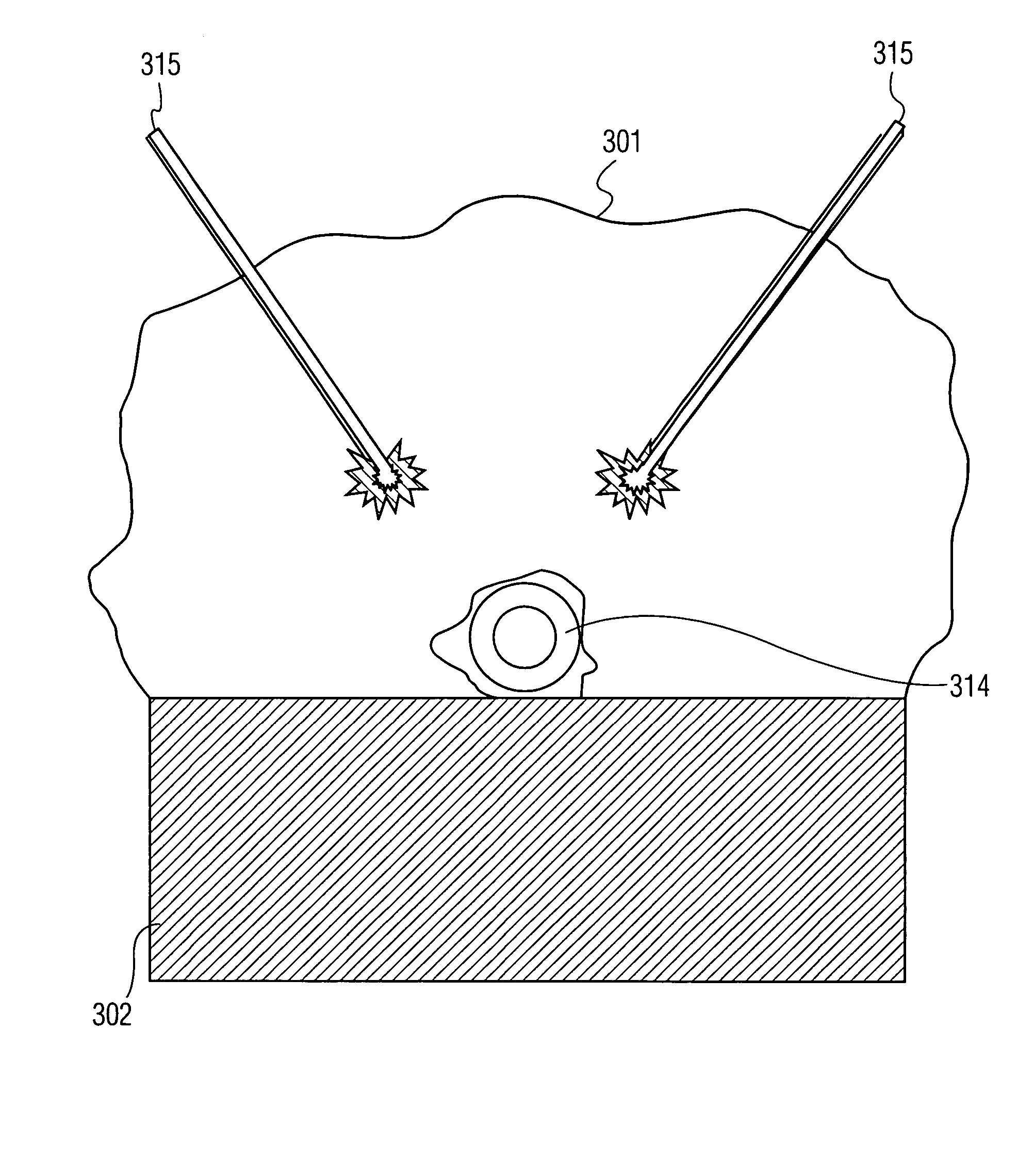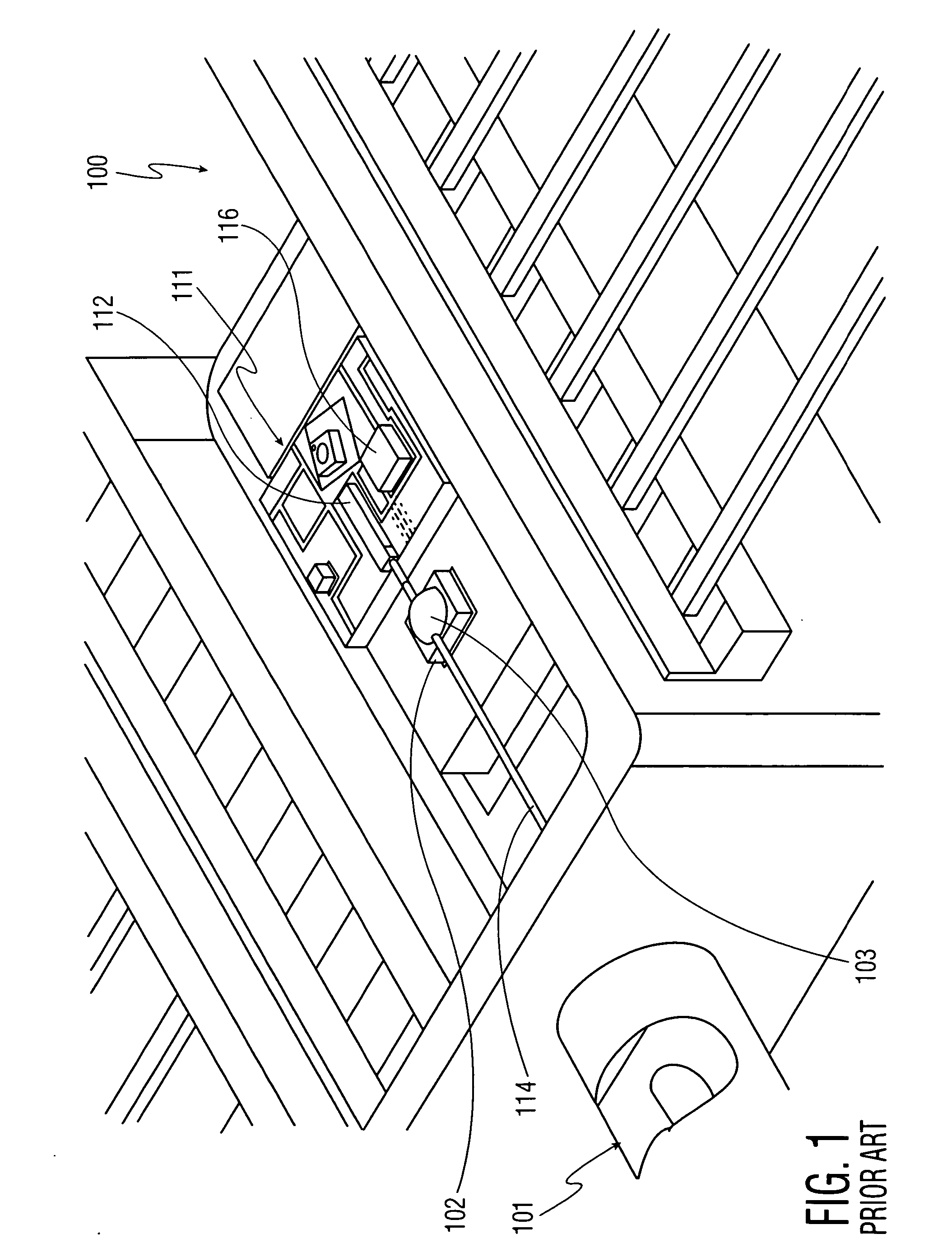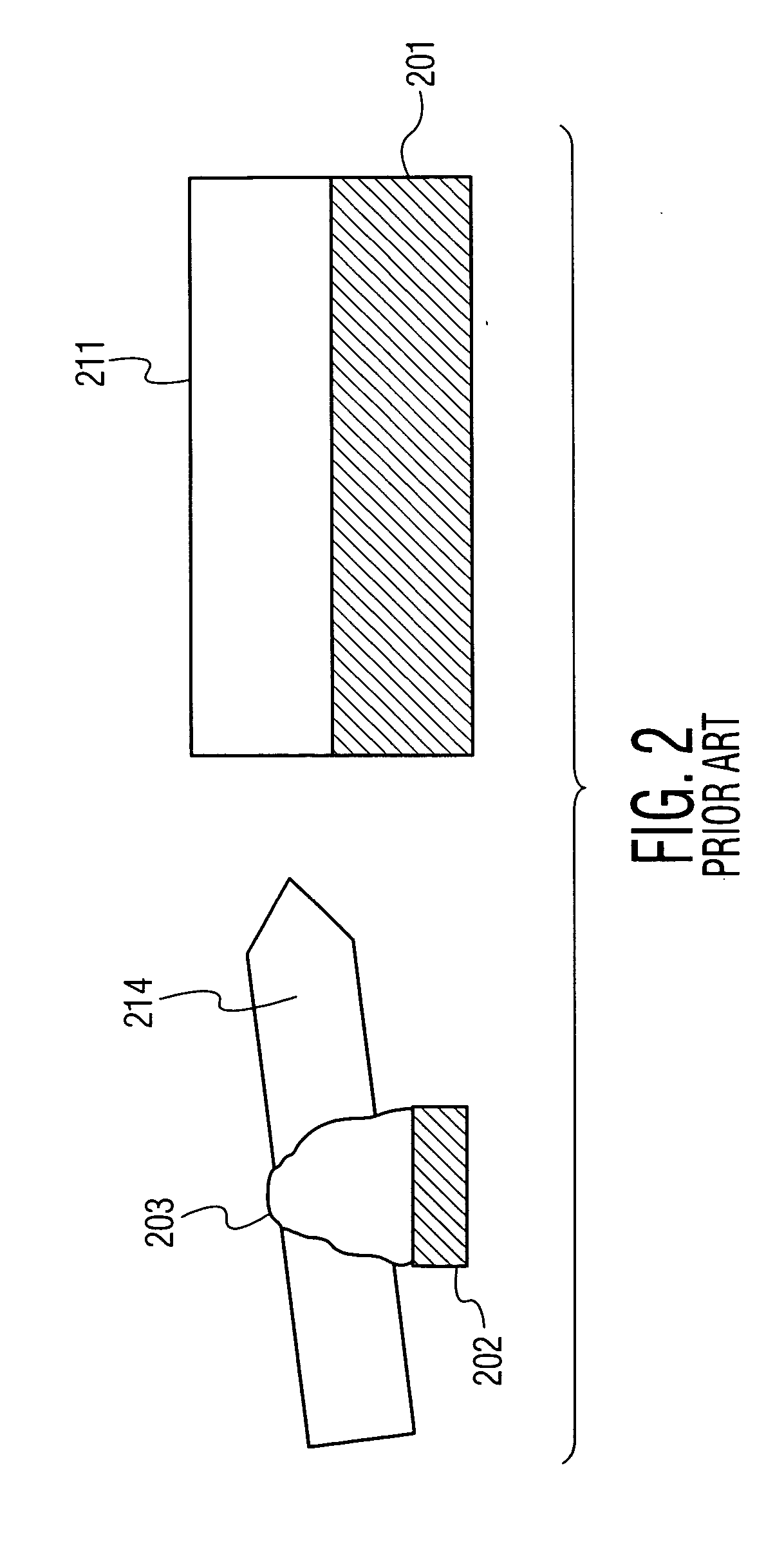Non-mechanical adjustment of an optical fiber to an optical output port
a technology of optical output port and optical fiber, which is applied in the direction of optics, instruments, optical light guides, etc., can solve the problems of low cost of epoxy attachment, inability to meet the requirements of high-precision attachments, and inability to maintain
- Summary
- Abstract
- Description
- Claims
- Application Information
AI Technical Summary
Benefits of technology
Problems solved by technology
Method used
Image
Examples
Embodiment Construction
[0019] Referring now to the drawing, in which like reference numbers refer to like elements throughout the various figures that comprise the drawing, FIG. 1 shows a butterfly package 100 according to the prior art. The prior art package 100 includes optical fiber 114 inserted through snout feedthrough 101 and attached to fiber mount 102 with solder attachment 103. Optical fiber 114 is also optically coupled to optical component 112 (e.g. semiconductor laser, laser diode chip, photodetector) mounted on a substrate 111. Also included in the package shown in FIG. 1 is a thermistor 116. If the package includes a thermo-electric cooler (TEC) it is beneath the substrate 111.
[0020] It can be seen from FIG. 1 that optical fiber 114 is mounted on a fiber mount 102 that is separate from the substrate 111 on which optical component 112 is mounted. Furthermore, because the fiber is attached when the optical component 112 is in the package 100, the alignment process may be complicated because t...
PUM
 Login to View More
Login to View More Abstract
Description
Claims
Application Information
 Login to View More
Login to View More - R&D
- Intellectual Property
- Life Sciences
- Materials
- Tech Scout
- Unparalleled Data Quality
- Higher Quality Content
- 60% Fewer Hallucinations
Browse by: Latest US Patents, China's latest patents, Technical Efficacy Thesaurus, Application Domain, Technology Topic, Popular Technical Reports.
© 2025 PatSnap. All rights reserved.Legal|Privacy policy|Modern Slavery Act Transparency Statement|Sitemap|About US| Contact US: help@patsnap.com



